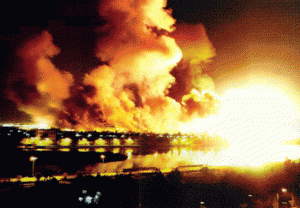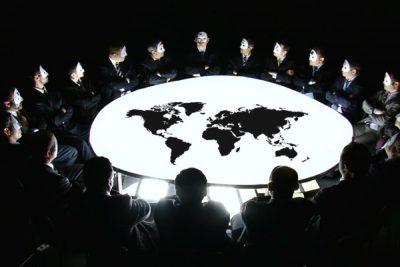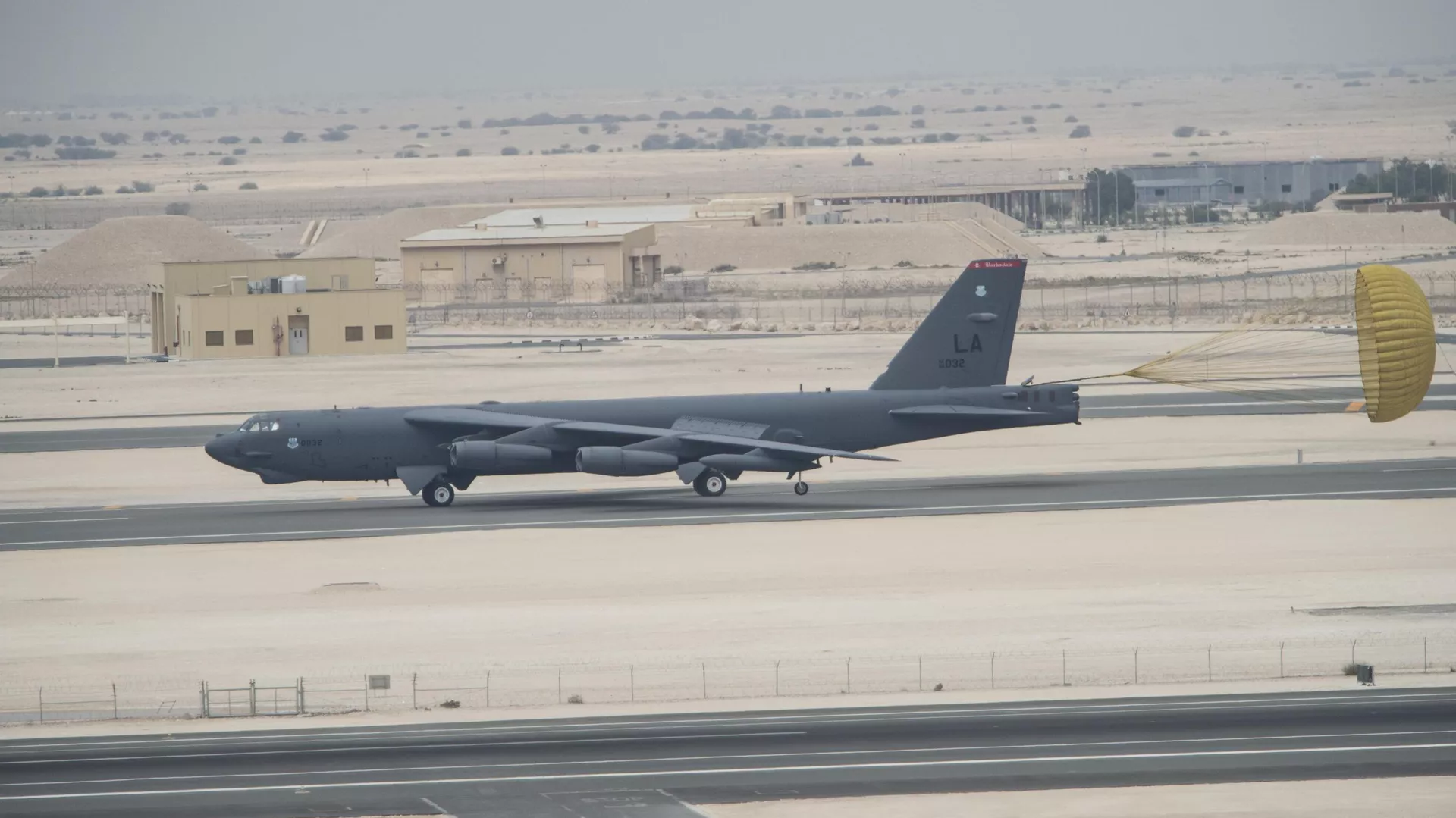
There is an emerging debate whether the US Empire is about to collapse or in decline (or neither). In my forthcoming book, ‘Twilight of American Imperialism’, forthcoming this fall this debate is discussed as part of the book’s history and evolution of the American Empire from 1768 to the present.
The main focus of the book is the contemporary period since 2008 and especially since 2020 and its analysis that, while the Empire is not about to collapse, it is clearly in a state of decline and a decline that’s accelerating. Special attention is given to the current Trump regime and a discussion of the question whether Trump policies can stop or even slow the decline. The following is the draft Introduction to the book where the main themes are outlined and briefly discussed. Here’s the Intro.
Introductory Chapter: Twilight of American Imperialism
By Jack Rasmus, Copyright 2024
Mid way through the third decade of the 21st century it is becoming increasingly clear the American empire has been growing steadily weaker across various dimensions—political, economic, cultural and even technological. Some say it has entered a period of decline. A few—prone perhaps to substitute wishful thinking for hard analysis—even go so far as to predict its imminent collapse.
Those advocating imminent collapse point to the USA’s military defeat and pullout of Afghanistan in 2021; the increasing likelihood of US exit from its proxy war against Russia in Ukraine after three years and $350 billion dollars cost; the growing economic and geopolitical influence of China and its deepening alliance with Russia; advances in military technologies & weaponry by Russia and China that the US appears to lack (hypersonic missiles, mass drones, certain naval assets, etc.); the expansion of the BRICS in the global south; the drift of a growing list of countries from the use of the US dollar in trade and as a reserve currency and from use of the US’s SWIFT international payments system; and so on.
While certainly weaker, and arguably in decline, the American empire is nowhere near imminent collapse. Its currency, the dollar, is still the majority currency in use in global goods transactions and money capital flow settlements. So too still is its SWIFT international payments system that runs through the large US commercial banks. Its central bank, the Federal Reserve, still functions as the ‘central bank of central banks’ with which most countries’ central banks move mostly in tandem. Since 1980, via massive money capital flows and FDI (foreign direct investment), US company presence and production has expanded throughout the world. The USA still provides the majority funding and controls voting in strategic economic institutions like the IMF and World Bank, even as China’s ‘Belt and Road’ initiative is mounting a major challenge to the latter. The USA still has the largest and most comprehensive global agreements on free trade. It maintains a leading role in the development of next generation technologies like Artificial Intelligence that constitute the future of new product lines even though China is nearly equal. Militarily, the US spends more on weapons and defense than all other countries combined, maintains more than 800 bases worldwide, has more bilateral military alliances than any other country, and maintains the largest naval force with a dozen of aircraft super-carriers and scores of nuclear submarines, each of which carry hundreds of Trident II nuclear missile warheads and are essentially undetectable. It provides the majority of funding for NATO and economically props up the European economy in divers ways. Its CIA and NGOs have engineered scores of regime changes in recent decades in smaller countries throughout the world that have dared to act independently of its imperial interests. It dominates the G7 ‘core’ US empire countries’ and exercises significant political influence over the foreign policies of countries like Japan, South Korea, Pacific Islands and in Europe and wherever it maintains large US military forces and bases.
In support of their view of imminent collapse, its advocates further point as confirming evidence to the Trump administration’s recent radical changes in its US military commitments in Ukraine; its shutting off of funding to US NGOs like USAID; the administration’s increasing feud and distancing of relations with European NATO members; its attempt to radically transform trade relations, propose deep cuts to fiscal spending programs; the administration’s aggressive reordering of US immigration and other legal relations; and Trump’s emerging conflict with US central bank chair, Powell, over interest rates. But simply citing policy differences one may deeply disagree with does not constitute causal evidence of how such policies lead inevitably to Empire decline, let alone collapse.
Challenging this often politically biased—and to some extent US mainstream media propaganda—view, in this book it will be argued that what appears as chaotic radical shifts in policy and political initiatives by the Trump administration should be more appropriately understood as an effort by the US elite (at least the segment of it supporting Trump) to restructure US domestic and global economic and political relations in order to consolidate and continue to fund its Empire in an era of growing challenges to Empire and its rising costs—especially given the USA domestic economy’s increasing failure to grow sufficiently to cover those rising costs.
The imminent collapse of Empire viewpoint also assumes Trump policies in his second term will fail and that failure will itself accelerate imminent collapse. This view is backed by little evidence to date as well, however.
Trump policies and initiatives are better understood as the opposite: i.e. an attempt to slow and even halt the decline of Empire. Alternatively viewed, Trump’s policies and initiatives are about trying to check and reverse American’s emerging imperial decline. Whether they will succeed in that regard, however, remains to be seen. The odds are likely against it, but who knows for certain.
A central theme of the book is that the American Empire is approaching a period in which it needs to restructure its imperial relations, practices and institutions. It cannot afford the cost of the Empire as currently structured.
US elite policies and practices thus far in the 21st century have not succeeded in expanding or even maintaining the Empire. An Imperial ‘Rubicon’ may have been crossed in 2008. And if not in 2008, certainly circa 2020-22 after the double shock events of the Covid economic shutdown that was quickly followed by the Empire’s geopolitical defeat in its Ukraine proxy war and the economic fallout from that latter event.
Collectively US elite policies and strategic decisions the last quarter century have been undermining—not advancing—the Empire, it will be further argued. Thus a fundamental restructuring is needed if the American Empire is to approximating its prior hegemonic role or exert anything even approaching the influence it once had during its peak from 1945 to 2007.
If the thesis is correct that a restructuring—not a collapse—of empire is imminent, the current will prove the fourth such restructuring during the past century undergone by the American Empire. Each restructuring of economic and political relations served to advance and/or maintain the Empire. The most recent three restructurings of the Empire occurred 1913-1919, 1944-1953, and 1980-1986.
A Brief History of American Imperial Restructurings
Chapter one of this book will review and critique the major theories of Imperialism. It will argue that most of these describe 19th and 20th century Euro-centric empires and fail to appropriately describe the American way of Empire. The American imperial experience differs in certain key aspects, which is described in chapter two and subsequent chapters.
Chapter two of this book describes the evolution of the American Empire as it broke out of and emerged from its parent British Empire in the mid to late 18thcentury. It retained some of the characteristics of the British at the time, but its essential drive in its early history was twofold: clear away the competing European empires on the north American continent—the Spanish in the far south, the remaining British on its undefined periphery border to the north, the last vestiges of the French in the Mississippi-Missouri valleys and later, toward the mid-19th century, the Mexican in the southwest and far west.
The second thrust of America’s continental imperial expansion in the 18th-19th centuries was to displace, destroy or otherwise move native American tribes off the Land by physically destroying them in wars or by disease, pushing and resettling them ever further west, or encapsulating and isolating them in small enclaves called reservations.
In either case—whether eliminating European competitors or native American tribes—the main objective of the early American Empire has always been Land. Not just land for purposes of farming but also for minerals, animal harvesting for the market, precious metals, lumber, grazing, and water resource control. It followed that central to the nature of early American imperial continental expansion was land speculation and profits from land as a market commodity. With each wave of westward emigration from the east coast colonies and initial states came waves of land speculation often even preceding land settlement. In its earliest forms, therefore, American imperialism was not just ‘land grabbing’ but land for purposes of financial and capitalist appropriation and exploitation.
This land acquisition financial imperialism was unlike its British parent. Britain’s empire considered its north American colonies as a source of natural resource extraction, using native americans as the ‘producers’ who provided the animal furs and products to it for resell back in England; or, the colonies’ producing lumber and farm products for shipment as well. British policy was to prohibit the acquisition of lands west of the colonies by the colonialists. It was a major source of contention and one of several issues that provoked the US war of independence with Britain in 1775-83. As details in chapter two will show, the newly independent USA’s 1787 Constitution represents an imperial restructuring, the first, for America.
Concurrent with America’s continental Empire building in its countless wars with native americans, from 1776 until the closing of the ‘frontier’ circa 1890s, was its war with Mexico in the 1840s which was concocted on the flimsiest excuses in order to conclude the final seizure of land on the continent in the southwest and far west. (Not counting the 1867 purchase of Alaska from the Russian Tzars). Once the continent was secured for Empire, only then did the Empire turn its gaze offshore in 1898. During that long interim from 1775 to 1890s the initial restructuring of 1787 served to enable and maintain imperial expansion westward across the continent.
That initial restructure worked for continental expansion, but would not for offshore global expansion, the first of which was attempted by the Empire in 1898 in a war with Spain. The land grabbing was for the Caribbean island of Cuba and lesser islands and for Spain’s huge colony in the far west Pacific Ocean, the Philippines. The conquest of Spain occurred fairly quickly but the pacification of the inhabitants of the Philippines dragged on for years, until at least 1902, and was very costly. The US Empire realized it needed greater resources and a larger Army and Navy to play the new role of Imperialist beyond a north American continent scale.
In the empire’s first offshore imperial expansion in the 1898-1902 Spanish-American war, the costs of war were financed by taxing the property of wealthy Americans. This did not work well and generated much political opposition among wealthy interests who were taxed. Without a central bank, monetary policy and bond financing to pay for the war was difficult as well. The US Treasury was not able to provide the bond financing for war expenditures. The US economy had just recovered from the great depression of 1892-98. In short, the tax base built mostly on tariffs was insufficient for covering the costs of global empire expansion. 1898 was a lesson for the need of restructuring fiscal policy rather than an experience in one
Not so World War I. As the US prepared to play a role in World War I, it restructured its fiscal and monetary policies in order to fund and afford the costs of imperial expansion: It created a central bank, the Federal Reserve, in 1913 to raise bond debt and it passed for the first time a corporate and an individual income tax and introduced inheritance taxation. These fiscal and monetary measures became the source by which the US paid for the build up of a world class military and funded its involvement in that war. A combination of direct taxation and sales of bond issues—the latter of which was extended to sales to the general public—became the primary source of war finance for the new imperial initiative in World War I.
During and after the war the USA assumed a role among European empires as a co-player in imperial advancement on the world stage. That meant its ‘external’ policy—i.e. trade relations, lending of money capital, importance of its currency the dollar—all became new areas of policy and part of the restructuring of both US domestic relations and external relations. Industrial policy was introduced as part of the restructuring as well during the war. US elites mobilized war production and created new institutional arrangements with labor and unions as part of the World War I restructuring as well. World War I thus introduced the specific arrangement of fiscal, monetary, industrial and external policies necessary for the American Empire to assume a major role on the global stage in competition with the major European empires.
Since World War I the US financed its imperial expansion out of a combination of taxation of domestic wealth holders, domestic production, and debt (bond) financing.
In World War II the empire applied a similar war financing arrangement of fiscal tax policy and bond issuance policy by the central bank. But now on an even greater scale. It raised record bond sales during the war, now from the general public as well as from wealthy investors. It also expanded and broadened its tax base. In a series of annual revenue acts by Congress starting in 1942, a top tax rate of 90% was imposed on the super wealthy and for the first time the tax system was ‘broadened’ to cover taxation of working class wage incomes. Also new was payroll deduction of income taxes. Both the working class taxation and payroll deduction were written in the revenue bills so to expire at wars end. Neither were. Both thus helped fund the American empire’s continued military expansion post 1945 and especially increased after 1950 and the Korean war.
The Vietnam war of the 1960s-73 was similarly financed by a special surtax of incomes and bond debt sales by the central bank. However, those policies now contributed to the economic problems in the US domestic economy and global economic hegemony weakening thereafter in the 1970s. The answer was to restore the empire’s financial base by measures commencing in the early 1980s that have come to be known as Neoliberalism. Neoliberal policies enabled the Empire to expand geographically offshore (aka globalization) and to financialize in parallel.
As a concept, Neoliberalism should thus be best understood as a term that somewhat obfuscates what is actually a set of policies (fiscal, monetary, industrial, external) serving to restructure American imperialism starting in the 1980s. That policy mix and 1980s neoliberal restructuring—the 3rd such since World War I—continued more or less unchecked until late in the first decade of the 21st century.
The expansion of the American Empire in the current neoliberal era reached an apex—economically, geopolitically, and technologically—roughly around 2005-07. About the same time US elites shifted their methods of war financing and methods for funding empire expansion. That is, just as the costs of expanding and maintaining the Empire began to escalate.
The Apogee of Empire: 2005-07
History will show the first decade of the 21st century was the high mark of the American Empire, especially the years mid-decade of 2005-07. It was the apogee of the Empire’s political-military power as well as global economic. Ironically, it was also the period during which changes and forces began to coalesce that set in motion the subsequent period of the Empire’s initial phase of decline, 2008-2020.
In 1999 US elites moved to absorb into NATO the east European nations once part of the USSR Warsaw pact. Poland, Czech Republic and Hungary joined. The big NATO move east, however, was in 2004 when Bulgaria, Romania, Slovakia, Estonia, Latvia, Lithuania and Slovenia all joined. Following that, in 2008 at a conference in Bucharest, NATO led by US elites’ announced Georgia and Ukraine would become NATO members as well. Thus was set in motion events that eventually erupted into the Russia-Ukraine/NATO war in 2022—a defining event in the decline of the American empire which may represent the most recent, second phase of decline. In parallel, however, US-CIA-NGO ‘color’ revolutions and regime changes were being engineered, including the early attempt at such in the Ukraine.
Image: At the start of the U.S. invasion of Iraq in 2003, President George W. Bush ordered the U.S. military to conduct a devastating aerial assault on Baghdad, known as “shock and awe.” (Source: Consortiumnews)
Another geopolitical event as marker for America’s imperial apogee was the Iraq war in 2003, a year just before the big NATO expansion. The Iraq war represents what appears to be the USA’s last successful direct military action. Neither China nor Russia were sufficiently strong enough to prevent the war. Russia was just emerging from its great depression of the 1990s decade and in a debilitated military condition except perhaps for its nuclear forces. China was dependent on western capital, US in particular, needed to jump start its economy after a weak 1990s performance and to begin its role as the world’s major manufacturing exporter. The rest of the global South countries were still heavily dependent on the US dollar, IMF-World Bank, US corporate direct FDI, and soliciting US free trade deals. The NAFTA north American free trade agreement was expanded, a number of bilateral free trade deals between the US and countries were signed, and a proposed North-South America free trade agreement was proposed. The Federal Reserve and its chair at the time, Alan Greenspan, seemed to be able to magically manage the economy. The news media referred to him as the ‘Maestro’ of the Fed.
Domestically, profits were accelerating and wage levels rising in the wake of the late 1990s tech boom. Jobs were plentiful at mid-decade. GDP economic growth was slightly above long run historic averages, except for the 2001 recession—the first in ten years—which proved relatively shallow and short lived in 2001. The Housing market was booming. In terms of technology, the internet and wireless access was penetrating an ever greater percent of the US population. The country appeared unified as never since decades before, in the wake of the 9-11 terrorist attacks. However, beneath the surface major forces were developing that would result in major economic, foreign policy and domestic US political eruptions at the decade’s close and beyond.
Economically, the Greenspan and Fed policy of flood the economy with virtually free money since 1986 continued into the 21st century. That helped fuel the tech boom of the late 1990s which overheated by 2001 and bust. Financial deregulation policies of the late 1990s and during the 2000s were laying an economic time bomb that would explode by decade’s end. Greenspan cut a deal with then President George Bush to be reappointed chair of the Fed in exchange for continuing to flood the economy with money and keep interest rates artificially low as the Iraq war was launched and Bush’s 2004 election approached. Fed monetary policy was artificially extending the business cycle into the new decade, overheating the housing market and, together with derivatives financial instruments and financial deregulation, creating the foundation for an historic financial crash later in the decade. Fed monetary policy was providing the fuel for financing US corporate offshore expansion and financial speculation that together were driving what was called ‘globalization’ and ‘financialization’ at the time.
The fundamentals for fiscal policy crises were also originating in the 2000s: In the wake of the 9-11 attacks, war and defense spending accelerated sharply throughout the decade. This coincided with the other side of the coin of fiscal instability—the start of the massive tax cutting in the midst of rising war spending. In 2001-04 taxes were cut $3.8 trillion for the 2001-10 decade, 80% of which accrued to corporations and wealthiest households. Not surprisingly, the first decade of the century witnessed the beginning of what would prove a long term chronic escalation of budget deficits and the US national debt. The national debt rose from $5.6 trillion in 2000 to almost double and $10 trillion by 2008.
In other words, the new fiscal policies of escalating war and defense spending amidst massive tax cutting began blowing a hole in the government budgets and creating ever growing budget deficits and in turn the national debt. In parallel, monetary policy of artificially low interest rates (at least until late 2006) put government bond sales in the service of subsidizing corporate offshoring and financial markets. This dual fiscal-monetary policy mix would erupt later into growing contradictions and crises in both fiscal and monetary policies in subsequent decades. But the pattern was set in the 2000s.
What these policies represent at another level is a general retreat by US elites from historic strategies for financing war and Empire. In the 21st century for the first time in US economic history the US elite began funding its wars and empire not by taxation or by bond financing of its citizenry, as it had in its imperial expansion throughout the 20th century. Now in the 21st war financing was largely out of direct legislation appropriations by Congress. In fact, as its ‘wars on terrorism’ erupted in 2001-03 and continued another 20 years, as it expanded its military bases worldwide after 2001, expanded its surface naval, missile, aircraft and submarine forces and Pentagon weapons spending in general, expanded the CIA, special forces, NGO funding, and began funding proxy wars—the US elites have notably done so while simultaneously massively cutting taxes instead of raising them!
The seeds of crisis in ‘external’ policy (trade, capital flows, currency) were also sown in the first decade period. Free trade deals were expanding, thus encouraging more offshoring by corporations and in turn demand by those corporations for low Fed interest rates with which to finance the offshore expansion. The US trade deficit consequently worsened in parallel with the budget deficit, as the trade deficit meant a rising net outflow of US dollars from the US economy to globally elsewhere. The ‘external’ problem would grow unstable in later years, but for now the excess dollar outflow was recycled back to the US economy in the form of foreign purchases of US Treasury bonds and securities. Heavy buyers of Treasuries were Japan, Europe and the new trading partner China. For now the trade deficit was enabling the financing of the rising budget deficit, which in turn was growing as a result of escalating war and defense spending amidst historic tax cutting.
A triad of fiscal-monetary and trade/dollar recycling policies were still mutually supporting each other in the first decade. However, should any one of the three fail to perform in the future—as they would—the consequence would prove to be growing instability in both the real and financial sectors of the US economy.
Problems and instability with the political system were intensifying as well during that seminal first decade. At the start of the decade the key marker of beginning political decline was the intercession of the US Supreme Court to decide who was the winner in the contested election of 2000 between George W. Bush and Al Gore. Problems with ballot counting in the state of Florida led not to a recounting of the ballots, as required by election laws but instead resulted in the Supreme Court intervening—with no Constitutional precedent—to stop the recounting and give the election to Bush. That decision set in motion a string of further decisions by the court, and other government institutions, limiting voters rights in elections. It was accompanied in 2001-02 with the passage of the infamous Patriot Act that authorized deep spying and surveillance of American citizens and thus a severe restricting of US Constitution 1st amendment and 4th amendment civil liberties and rights. Campaign finance reform efforts also died during the first decade, crowned by the Supreme Court decade’s end Citizens United decision ruling that corporations were persons with the same free speech rights as citizens and they exercised free speech by contributing money in elections to their favored candidates. Between these ‘anti-democracy’ book ends of the decade were various court decisions ‘gerrymandering’ Congress so that both parties, Democrats and Republicans, locked themselves into near majorities despite elections. A separate chapter of the book will address the various dimensions of democracy decline after 2000 as a reflection of growing decline of Empire.
US social-cultural decline emerging in parallel with the apogee of America’s imperial hegemony also began circa the mid-first decade. To cite just a few indicators: US deaths by drug overdose rose from 17,000 in 2000 to 36,000 by 2007. Suicides rose from 33,000 to 38,000, 60% of which were by guns. Homicides by guns totaling more than 10,000 that latter year as well. By 2023 drug overdose, suicides and homicides would rise to 87,000, 49,000 and 19,000 respectively. Socio-cultural decline has many indicators, addressed in more detail in later chapters in the book. This will include an important, albeit difficult to quantify, impact of social media on country’s general mental health, especially of youth, and its consequences for undermining of the political system itself. The 2000s marked the beginning of important changes in technology impacting both mental health and political instability: In 2003 social media giants like Facebook appeared—and their negative impact on society and democracy accelerated after the introduction of Apple’s Iphone in 2007.
Thus in summary, History will likely show—and this book will argue and attempt to explain—the American empire reached a peak in terms of global economic hegemony and an apex in geopolitical and military power around the middle of the first decade of the current century. Subsequent to 2005-07, the Empire in all its key dimensions—economic, political, social, technological, and even cultural—has been in decline. Moreover, that rate of decline has not been stable or linear but has accelerated after certain crisis events which include the 2008-09 economic crash, the Covid crisis of 2020 and, most recently, the imminent loss of the US/NATO proxy war in Ukraine.
The Increasingly Unaffordable Empire
The creation and maintenance of empire is an expensive undertaking. At the foundation of all is their economic base. The costs of pursuing and/or defending empire are significant. The home country must produce or otherwise acquire significant economic resources with which to finance empire. This has been true not only in the modern era of empires in the last five hundred years or so during capitalist economy, but even before that.
Empires rise over the course of decades or even centuries. And they weaken and decline over extended periods of time. An appearance of collapse is just the final act. Empires never collapse due to lost wars but due to internal forces. Lost wars are more a symptom and reflection of those internal forces driving decline, than a cause of them. That has been true from the Roman Empire to the more recent British.
All empires lose wars along the way as they expand, as well as from time to time during their period of subsequent sustained ascendance. The Roman lost many wars along the trajectory of its expansion as well as during its centuries-long period of sustained ascendance. Rome’s expansion was financed initially by plunder or its opponents’ wealth, including its ‘investments’ in human capital in the form of mass slavery. Its occupation of foreign lands then added to wealth and surplus extraction in the form of taxing of agricultural production, in particular grains. Its decline began when it stopped expanding by conquest and acquisition of plunder and slaves and then subsequently also lost the grain agricultural production regions that produced the economic surplus with which it financed its armies—first in Egypt when the empire split into east and west in the fourth century and then in North Africa, Sicily and Spain after Germanic invasions in the 5th cut off the surplus. Rome’s armies atrophied and with it its ability to defend its former acquisitions.
Fast forward to the 19th century British empire. It too expanded by means of acquisition of surplus wealth from the countries it conquered. The surplus upon which its empire depended and expanded was not primarily slavery or agricultural. The British extracted wealth from its colonies by means of natural resource plunder and cheap production of goods by the native population (wage slavery as some might call it). Its colonial administrations organized local mining and goods production, as well as agricultural production, and subsequently shipped the goods back to Britain for resale at profit in the home country and for trade to other countries. Thus trade and the market were the sources of surplus wealth extraction with which it financed its Navy and armies to further expand and defend its acquisitions and empire in general.
This system of empire worked well into the 20th century, even as it broke down elsewhere at times in its imperial advance. One such example of was the empire’s loss of the war with its North American colonies in the late 18th century. Until the 1780s its ‘American colonies’ functioned to extract wealth by means of agricultural and resource production by colonists as well as trade with native American tribes for furs. Britain controlled the banking and shipping of all goods to and from north America. The colonists were not allowed to develop their own banking system, own currency, or even their own shipping. They could not trade with any other countries (especially Caribbean or French goods) but only with Britain which controlled and set the terms of trade. This monopoly control by London was the source of much of the colonists’ original revolt. It was surplus extraction by means of the monopolization of trade and the dominance of market control.
The decline of the British empire began in earnest when it could no longer control the terms of trade with its former colonies and extract sufficient surplus in order to finance a military force necessary to fight a world war. The costs of empire in the 20th century exceeded its extraction of surplus needed to fund that empire. It ended up borrowing from the rising American empire in the 1920s and after 1945 it was essentially broke financially. It effectively auctioned off its control of key resources in the middle east and elsewhere to America during and after the second world war and then had to abandon India and its other colonies after 1945 as well.
.

Robert Clive’s victory at the Battle of Plassey established the East India Company as both a military and commercial power. (Public Domain)
.
As inheritor of the British empire, the trajectory of the American in the latter 20thcentury has been similar but in key ways different as well. Surplus extraction has been by trade but also by dominance of money capital flows—i.e. finance. Financial imperialism has played a greater role than in the former, mostly industrial British empire.
After America quickly assumed the role of global hegemon after World War II, and solidified that role by fundamentally restructuring its economy and political system between 1944-53, the American empire ruled more or less unchallenged over the vast majority of the globe for the remainder of the 20th century. Funds for financial imperial expansion were plentiful, both from high rates of economic growth, a solid tax revenue base, trade surplus that brought wealth into the USA from around the world dependent at the time on US exports, as well as from financial exploitation. New institutions of empire were created, like the IMF, World Bank, SWIFT payments system, etc. that did not exist similarly under the British empire. The comparison of empires is based, however, not just on institutional differences but on the practices of how imperialism is employed. Chapter three of the book considers the new institutions of the American empire and how well they functioned in maintaining empire—and then increasingly didn’t or did less so over time.
American imperialism was more efficient than the British in extracting wealth from its areas of dependency and control. Competition to the extent it existed was largely marginalized in the 1980s. There were no economic challengers to USA hegemony thereafter for a quarter century. Europe and Japan were rendered deeply dependent on the US both economically and politically after the 1980s. The Soviet Union remained economically isolated within the USSR and east Europe and walled off from the rest of the global economy and then imploded by the end of the decade. China was even more isolated and economically backward throughout that period and well into the 1990s.
The US imperial system entered an economic crisis in the 1970s decade but that was contained and subsequently overcome. Challenged both at home by labor, social movements and growing popular resistance in the early 1970s—as well as from abroad economically by the expanding economies of Japan and Europe and by inroads on its periphery by the USSR—the American empire experienced its first real postwar crisis in the 1970s as the US economy was wracked by the worst inflation and recession since the 1930s, business investment collapsed, the breakdown of the gold-dollar standard created in 1944, and Japan and Europe began challenging its dominance in world trade during the decade.
Its loss in Viet Nam in 1974 did not lead to the empire’s collapse, however; nor did the loss in Vietnam even mark the beginning of imperial decline. Losses of particular wars are not indicators of imperial decline necessarily. After the end of the Vietnam conflict in 1974 the empire went on to expand even further in the 1980s for another quarter century, as it underwent a second major economic and political—that is neoliberal—restructuring over the next quarter century 1980-2005.
US global hegemony thus was restored after the 1970s crisis by the restructuring of the economy and the political system during the neoliberal era, 1980-2005. Both US domestic and global political and economic relations were successfully rearranged. Neoliberal policies thereafter unleashed a major historic wave of US capital expansion abroad assisted by the financializing of the global economy with the US as dominant force. A geopolitical expansion starting in the 1990s accompanied the economic set in motion in the 1980s.
In summary : the loss of war in Vietnam amidst the general weakening of the US imperial system in the 1970s did not usher in a collapse of empire. Neither did the significant domestic US political instability and economic stagnation of the decade. Nor the challenges from capitalist and non-capitalist competitors globally. The empire was restructured and restored.
That ‘Neoliberal’ restoration of Empire began to fracture and break down in the 21st century, however as it reached its ‘apogee’ as discussed previously.
As in the case of prior Empires, the American’s ability to finance the growing costs of Empire in the 21st century—based on an economy increasingly unable to generate a surplus sufficient to fund those rising costs (for a host of reasons addressed in the book)—ushered in an extended period in the 21st century of growing contradictions within and challenges from without to America’s imperial hegemony. This included contradictions within the policies that enabled surplus wealth extraction, contradictions within the policies that produced wealth within the economy, as well as contradictions between the economy and the empire’s political institutions.
Phase One Decline: The Long 2008-2020 Decade
In the book the idea of contradictions is central to the analysis of the decline of the American empire in the 21st century following its 2005-07 peak. Contradictions in this case defined as the functioning of one set of policies, institutions or practices causing the decline in the effectiveness of other policies, institutions or practices; or the effort to prevent the decline in the effectiveness of one set of policies, institutions or practices exacerbating the effectiveness of another set; or how decline in either set results in a feedback effect causing the other to become even less effective.
As another chapter will argue as a case, efforts to resolve contradictions within fiscal policies (taxes, spending, deficits, etc.) result in an intensification of contradictions within monetary policies(interest rates and investment)—and vice versa. Or how growing problems in external policies (trade, money flows, currency stability) in turn exacerbate fiscal policy contradictions. Or how geopolitical change and challenge to empire exacerbate external economic policies. Decline in empire begins when the economic base contradictions multiply to the point that attempts at resolving one results in deterioration of others. Crisis occurs when the contradictions multiply to the point that the Empire cannot be maintained without a major restructuring in economic and political relations, domestic and foreign.
An example is the fiscal and monetary contradictions of Empire that began to grow throughout the first decade of the 21st century thereafter erupting toward the close in the general crisis of 2008 that came to be known as the financial crash and great recession.
.

The bankruptcy of Lehman Brothers (headquarters pictured), the fourth-largest U.S. investment bank, on September 15, 2008, is often considered the climax of the 2008 financial crisis. (Licensed under CC BY-SA 3.0)
.
In the wake of the September 11, 2001 attacks on the USA, the direct and indirect costs of empire began to accelerate. The war on terrorism, as it was called, resulted in significant rise in defense and war spending. That was shortly thereafter in 2003 escalated by the unrelated war on Iraq and subsequent continued war with forces of resistance in Iraq and Afghanistan. The US elite declared war unofficially on what it called the ‘axis of evil’, which meant targeting Libya, Syria and North Korea as well as its long term opponent, Iran. The Empire would eventually spend $9 trillion on its various wars in the middle east alone—not counting a surge in strategic weapons buildup for aircraft carriers, nuclear submarines, satellites, new versions of tanks, planes and other combat equipment and general Pentagon salary escalation.
Simultaneous with this defense-based fiscal spending, US elites decided the Empire could embark on massive tax cutting for mostly business interests. In the first decade $3.8 trillion in tax cuts were enacted by 2004, followed by at least another $180 billion in 2008 and $300 billion in 2009 as the great recession occurred those last years of the decade. Another $4 trillion in monetary injections by the US central bank, the Federal Reserve, accompanied the roughly $850 billion of the Obama administration’s fiscal stimulus of 2009-10. Weak economic recovery after 2009 would result in another $800 billion in tax cuts for 2010-12 followed by a further additional $5 trillion starting in 2013. Weak real economic growth from 2010 to 2015 further reduced tax revenues, as Pentagon and defense spending continued at excessive levels addressing continued warfare in Iraq, Afghanistan, Libya and elsewhere.
The consequence of the progressive surge in war and defense spending from 2001 on—amidst the massive tax cutting underway in parallel, was a record surge in US annual budget deficits and rise in the national debt during the first decade. That plus the cost of social bailouts from the 2008-10 crash amounted to a rise in the national debt from $5.6 trillion in 2000 to $10 trillion in 2008. Subsequent tax cutting in 2009-10, slow economic recovery from the great recession crash, $5 trillion in further tax cuts 2013-23 and continued war/defense spending resulted in rising annual budget deficits and $19.5 trillion national debt by 2016. The Covid economic crash added another $3.1 trillion in bailouts in 2020 as tax revenues collapsed due to the Covid shutdown of much of the US economy. The deficit in 2020 alone was more than $3 trillion and the national debt went to $27 trillion by the end of that year.
Meanwhile monetary policy in the form of the US central bank, the Federal Reserve, was developing its own set of internal contradictions as well. Instead of introducing a policy of selling government bonds to finance the war and defense spending surge, the central bank policy focused on injecting money into the economy to keep interest rates near zero. That fueled financial market speculation and instability. Policies of financial deregulation since 1999 and the excess speculation led eventually to the financial crash of 2007-09. That exacerbated the fiscal crisis by reducing tax revenues and increasing bailout costs. Monetary policy contradictions were exacerbating fiscal policy contradictions, in other words.
The feedback effect between fiscal and monetary policy also intensified. To cover the rising budget deficits, the Fed sold more Treasuries. More money injected into the economy led in turn to more financial asset market speculation instead of real investment, as result of the growing financialization of the US and Empire economy since the 1980s and especially after deregulation of finance after 1999. Contradictions in fiscal and monetary policies were feeding off each other. Simultaneously both were becoming increasingly ineffective in stimulating real economic growth, as evidenced by the chronic slow recovery of the real economy (at roughly 2/3s normal growth) throughout the second decade of the 21stcentury even before the Covid crash of 2020-21.
In separate chapters the book will address the contradictions in both fiscal and monetary policy in more detail, and the role both play in the growing inability of the Empire to fund its rising costs since 2001.
Also considered in subsequent chapters how both fiscal and monetary contradictions are interacting negatively with contradictions in external policy as well (trade, money flows, the US dollar as global currency, etc.) that have been intensifying over the past decade.
What this brief preceding and partial overview of contradictions represents is that the US elite in 2001 embarked upon a set of policies to fund rising commitments and costs of maintaining the American empire that have thus far proved a dismal failure. The rising costs of defense amidst historic tax cutting and required social bailouts in 2008 and 2020 have resulted only in escalating annual budget deficits and accelerating national debt.
Subsequent to the $3.1 trillion cost of bailout in 2020, another $3.7 trillion was introduced in fiscal stimulus. Plus another $4 trillion in monetary stimulus by the Federal Reserve. Since 2020 that amounts to a total fiscal-monetary stimulus of more than $10 trillion. The response of the real economy in terms of growth has been even more anemic than during the recovery from the 2008-09 crash when $1 trillion fiscal and $4 trillion Fed stimulus produced a below average GDP growth until 2016. Since the $3.6 trillion fiscal and second $4 trillion Fed monetary stimulus in 2020-21, the US economy has grown barely equal to its long term historic average of 2-2.5% GDP. That’s worth repeating: $10 trillion stimulus produced barely 2% growth in the subsequent three years 2022-24!
Meanwhile, since 2020 the costs of Empire have continued to accelerate—as the US empire engaged in a costly and winless war in Ukraine, continued funding European NATO economies, addressed wars in Israel and Yemen, and prepared militarily for eventual conflict with China in the Pacific. In short, the Empire’s home economy is increasingly incapable of producing the surplus necessary to fund the rising costs of Empire. It continues to allow deficits and debt to accelerate, now by 2024-25 at levels of nearly $2 trillion annually and $36 trillion, respectively. As a result of Fed interest rate hikes since 2022, the interest on the $36 trillion national debt in 2024 has exceeded $1 trillion for 2024 and rising. According to the research arm of Congress, the Congressional Budget Office, the national debt by 2024 will amount to $56 trillion and interest payments to $1.7 trillion annually.
The Empire can no longer afford to continue the $17 trillion in tax cuts it has implemented since 2001 and the $9 trillion it has spent on foreign wars—while paying more than $1 trillion a year to holders of US Treasuries, $1.3 trillion annually for Defense, and prepare for another financial-economic crash and recession bailout should it inevitably occur!
Like the Roman and British empires before, the American empire is facing a crisis in the continued funding of its Empire. Contradictions in policy and their growing ineffectiveness are no longer able to generate the necessary domestic economic growth and surplus from which to finance the growing costs of empire.
It no longer has the economic base to fund three wars—in Europe (which includes the costs of NATO and Ukraine war), in the middle east (funding Israel, US naval assets in war with Yemen, preparing for possible war with Iran), and in Asia (prepare for conflict with China over Taiwan or South China sea). The American Empire can no longer afford to maintain 800 bases worldwide, retain a top heavy senior officer military (45 four star generals & below), pay for a bloated CIA-NGO regime change apparatus and government war bureaucracy, and develop next generation weapons in areas it is behind like hypersonic missiles, drones, air defense, nextgen naval assets and other ‘blackbox’ secret projects. And it cannot do this while it maintains and expands tax cuts, pays bondholders $1 trillion a year, and if it experiences another great financial and economic crisis that appears to occur every decade now. And especially it cannot if the US economy continues to grow at barely 2% per year. Or if the emerging challenge by the BRICS and global south result in a decline in the role of the lynchpin institution of the US global empire, the US dollar, as the dominant global trading and reserve currency.
Trump 2.0 and the 4th Restructuring
The US mainstream media which is largely aligned with the Democrat party and those interests called, for lack of a better term, ‘globalists’, continue to aggressively push the message that Trump’s policies introduced in 2025 are chaotic, misdirected, reckless and doomed to failure at a cost of economic crisis and collapse of the former USA ‘rules based order’ which characterized policies in the Neoliberal era up to and through the recent Biden administration.
Image: Official Inaugural Portrait of Donald Trump. (Public Domain)
In the analysis of this book in its concluding chapters, Trump 2.0 policies and programs are best described, however, as a stumbling toward a new restructuring—a new set policies and a new re-arranging of US and global economic and political relations. Within that restructuring lies a shift to new sources and methods with which to fund the American Empire.
A major thrust of Trump policies is to shift defense and foreign spending from areas of little return for the cost and from areas no longer strategic for US imperial interests. Europe and NATO are no longer considered as strategic enough to justify the level of current NATO spending, which includes the US proxy war in Ukraine. Nor is the billions spent on agencies like USAID, national endowment for Democracy, and other NGO funding. A review of excess and unnecessary expenditure in the Departments of Defense, State and CIA is also underway. Bloated staffing accumulated over the past forty years of expanding Empire commitments is also under review. The USA had four 4-Star generals at the close of world war II; it reportedly now has forty-five and who knows how many three and two stars. Many will go into retirement. Other staffing will no doubt be cut as well.
The DOGE initiatives should be viewed in the same light. Congress has identified a potential 1.7 million cut in federal employment. Likely at least 1 million will occur. Most will occur via quits, probationary (< 2 yr service) employees, and those in federal government support for Education—the costs and employment of which will be turned over to the states to manage.
Trump tariff policies should be viewed in light of this general federal government cost cutting. The primary function of Trump tariff policy is to raise revenues, while using the threat of tariffs to extract political concessions from governments in areas like immigration and so on. Long term tariffs are designed, in Trump policy, to incent US and foreign corporations to relocate to the US economy and invest more in the US. Tariff policy too is designed to raise funds for new defense area spending in tandem with foreign policy savings from reducing unnecessary empire spending cuts.
The American Empire is in the process of consolidating to focus more on the western hemisphere and the Pacific, rearranging strategic priorities, preparing to engage the BRICS, China and Russia economically and otherwise, and securing sources of funding for next generation military and defense technologies and weaponry in areas in which it is currently behind China and Russia. That is what the withdrawal from Ukraine, NATO, the tariffs and other apparent shifts are about.
Whether Trump succeeds in this restructuring remains to be seen. Trump 2.0 is for certain a restructuring of external relations—economic, military and political. It may amount to a more general restructuring of the US economy and domestic political relations as well. Whether the changes will result in an abandonment of the Neoliberal policy mix introduced by the Reagan administration in 1980 and its replacement with something fundamentally different also depends on changes yet to unfold.
To summarize on this concluding point: the American empire as structured today, at the end of the first quarter of the 21st century, is increasingly unaffordable! Changes in the US and global economy over the course of the neoliberal policy regime (1980-2025) has, in addition, made the US economy financially ‘fragile’ and potentially unstable, while simultaneously slowing its ability to grow in real terms at a reasonable rate required to fund the growing costs of Empire as recently structured. While neoliberal policies enabled the expansion of empire for a quarter century, those same policies—fiscal, monetary, industrial and external (trade, currency, capital flows)—have developed contradictions that can no longer simultaneously enable the funding or maintaining of the rising costs of Empire. Nor can they continue to function to stabilize effectively the US domestic economy or its economic relations globally. Trump 2.0 policies should be viewed in this context, as its administration stumbles toward trying to confront the reality of an Empire in decline and to reorder it in order to ensure its continued existence.
The following is an initial summary of chapter content of the book, Twilight of American Imperialism.
Chapter Content
Chapter One includes a review of some of the key literature on Imperialism. How have non-Marxist (bourgeois) economists (Schumpeter, Weber, Hobson, Fielding, Hardt) explained Imperialism? How have classic Marxist economists (Marx, Lenin, Hilferding, Luxemburg) explained it? How about more contemporary writers (Sweezy, Harvey, Hudson, Foster, Smith, Wallerstein)? What have they missed in understanding the nature of Imperialism in general, and American Imperialism in particular? Apart from the theorists, what was pre-capitalist era imperialism like? What were its key elements: conquest & plunder, land grabbing, resource theft, colonial managed exploitation, primitive, slave based, non-slave forced labor, merchant trade? How has capitalist era Imperialism differed from pre-capitalist? How has it evolved and changed over time, from capitalist colonialism, post-colonial industrial, unequal trade Imperialism, financial imperialism? A working definition of Imperialism across its genus and various species is offered as a basis for analysis and comparison.
Chapter Two discusses the evolution of American imperialism itself— from its early traditional land-grabbing expansion across the North American continent from 1768 to 1890, its initial offshore colonialization in 1898-1902 that followed, its emergence on the global scale in the wake of World War I alongside British Imperialism, followed by its global ascendance and consolidation after 1944 largely displacing European and Japanese imperialisms. Described as well is how the Empire dealt with the challenges to Empire in the 1970s decade, thereafter restored American global hegemony in the 1980s with Neoliberal policies, ruled unchallenged and expanded after the fall of the Soviet Union in 1991, reaching its apex in the first decade of the 21st century.
In Chapter Three the key institutions of American economic and political imperialism in its era of ascendance post-World War II are identified, from those initially created at Bretton Woods in 1944 to the institutional forms that appeared in response to the crisis of Empire in the decade of the 1970s, and the further institutions that arose in the 21st century.
Chapter Four provides a detailed review of the chronic mal-performance of the US economy in the 21st century. While American global hegemony reached its apex in the first decade of the 21st century, underlying contradictions in the Empire’s economic base were maturing in parallel since the 1980s. How those contradictions—rooted in the material triad of globalization, financialization, and accelerating technological change—contributed to the chronic mal-performance of the US economy after 2000 is the subject of the chapter.
Chapters Five and Six then review the associated, growing contradictions to US monetary and fiscal policies which the US economy has historically relied upon to stabilize the US economy and thereby facilitate the Empire’s expansion after 1980. The chapters address how and why fiscal and monetary policies, respectively, entered a period of growing contradiction after the great financial crash and recession of 2008-09.
Chapters Seven and Eight describe how US global economic and political hegemony has been fading since 2008-09, and especially since 2020-24. Discussed here are material forces and institutions such as the US dollar as global trade and reserve currency, the US managed SWIFT payments systems, the US global twin deficits dollar recycling system, free trade agreements and the World Bank as institutions promoting US foreign investment, America’s growing resort to trade wars and reliance on sanctions, the impact of new technologies on the balance of military power, the IMF and US Federal Reserve bank ensuring stable currencies in a post-gold world, US wars of empire and military strategy the past quarter century, declining US influence in global institutions like the WTO, United Nations, G20 as well as its ability to wield soft power influence in general.
Chapters Nine and Ten turn to US Empire’s domestic conditions and a description of how domestic political and social conditions are also indicators of current American Imperial decline: These include splits in the ruling elite, decline and loss of legitimacy of democracy and internal political institutions, political party decadence, political corruption, fading influence of mainstream media, civil liberties’ crisis, etc. as considered as indicators of internal political decline are reviewed in chapter 9. To which are added a discussion of indicators of US social decline in chapter 10.
Chapter Eleven visits the evolving ideology of Empire. A definition of Ideology is offered, followed by a discussion of the key ideas that have been serving to justify Empire—from ‘Human Rights’ and ‘American Exceptionialism’ of prior decades to the more contemporary ‘Axes of Evil’ and ‘Rules Based International Order’.
The final Chapter 12 summarizes the material forces behind the fading of US global hegemony and Empire in the 21st century: How proliferating US wars in the 21st century have contributed; the chronic long term slowing of the US real economy; the increasingly ineffective fiscal, monetary, and external US economic policies; US neocons’ disastrous dominance of US foreign policy, the US elites’ wanton dissipation of critical US resources; declining legitimacy of US domestic political institutions and democratic practices; the declining standard of living and quality of life in America; growing rejection of the Ideology of Empire by broad sectors of US society; the weakening global institutions and tools ($dollar, SWIFT, IMF, World Bank, WTO, G20, etc) of Empire; and the rise, expansion and successes of China-Russia-BRICS and general challenge to Empire by the global South. All the preceding forces have been converging and thereby contributing to the undermining and fading of American imperial hegemony. The final chapter concludes with an appraisal of Trump’s 2025 policies as an attempt to re-stabilize the American empire despite forces driving its decline.
Ten Theses on Imperialism
Throughout the 12 chapters of the book major themes about Imperialism in general—and American Imperialism in particular—are raised and discussed. In brief, these include:
1. Imperialism is fundamentally about extracting the wealth of a country, region or nation group by another—the methods and means of which may vary as well as evolve over time;
2. Imperialisms evolve in both form and content, and in parallel with the evolution of the dominant economic system and that system’s materialist base;
3. All Imperialisms rest on a particular material and institutional structure and may expand and weaken, revive, weaken again, expand again, etc. before a conclusive decline and end;
4. American Imperialism has evolved in stages from the mid-18th century to the early 21st century—from early land-grabbing settler, slave form, offshore colonial, and industrial-unequal exchange trade forms to its current highly financialized and technology-dependent form;
5. American Imperialism peaked Economically, Politically and Militarily in the first decade of the 21st century;
6. Contradictions within American Imperialism have been growing since the 1980s, deepened after its 2007 apogee with the 2008-09 financial and real economic crash, and have accelerated in decline in the current 2020-25 period;
7. In the latest phase of its decline, 2022-25, the American Empire has begun a process of contraction, consolidating its core Economic-Political-Military allies (G7/8) while simultaneously responding more aggressively (economically and militarily) to its challengers;
8. The American Empire’s Technology Advantage Gap, that in former decades ensured American military hegemony, has eroded sharply in the last decade and will continue to narrow;
9. The Rise and expansion of the BRICS and allied global South presents an existential challenge and threat to American global hegemony and Imperialism;
10. Trump policies beginning 2025 represent an attempt to restructure US global economic relations, shift strategic priorities and restore funding necessary for stabilizing the decline of Empire.
*
Click the share button below to email/forward this article. Follow us on Instagram and X and subscribe to our Telegram Channel. Feel free to repost Global Research articles with proper attribution.
Dr. Rasmus is author of the books, ‘Central Bankers at the End of Their Ropes’, Clarity Press, 2017 and ‘Alexander Hamilton and the Origins of the Fed’, Lexington Books, 2020. Follow his commentary on the emerging banking crisis on his blog, https://jackrasmus.com; on twitter daily @drjackrasmus; and his weekly radio show, Alternative Visions on the Progressive Radio Network every Friday at 2pm eastern and at https://alternativevisions.podbean.com.
He is a regular contributor to Global Research.
Global Research is a reader-funded media. We do not accept any funding from corporations or governments. Help us stay afloat. Click the image below to make a one-time or recurring donation.











































No comments:
Post a Comment